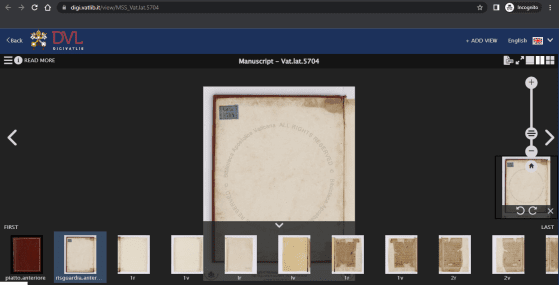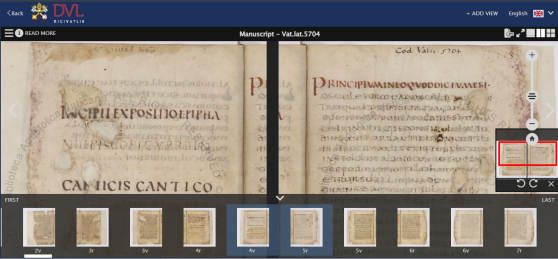There is an old Latin manuscript in the Vatican Library dated to the sixth century A.D./C.E., which has a Commentary on "the Song of Solomon" (or "Canticles"), attributed to a man who was a companion of Jerome, and was the Bishop (or overseer) of Cyprus, Epiphanius of Salamis (circa. 310/320-403 A.D./C.E.).
The Commentary would have been written in Greek, but has been translated into Latin.
Vat. lat. 5704 (circa. 6th century A.D./C.E.) Folios 11v-12r.
https://digi.vatlib.it/view/
Here on Folio 4v, we have the title heading (or Incipit): "Incipit Expositio Epiphanii Episcopi Cyprii In Canticis Canticorum".
Then on Folio 96v, at the end of the Commentary, we have the end heading (or Explicit) "Expliciunt Commenta Epipha[nius]".
The Folio where the writer quotes 1 John 5:7-8 in Latin at the very bottom line of Folio 11v and into the top line of Folio 12r.
Here's the same images of the text of 1 John 5:7-8 highlighted in red.
There is no Comma (Parenthetical Text) in this quotation.
The Latin text of 1 John 5:7-8
“Quia tres sunt, qui testificantur, aqua et sanguis et Spiritus, et quia tres unum sunt.”
The Latin text was published in print form by Pietro Francesco Foggini in 1750.
Here's his text.
Sanctus Constantiae archiepiscopus Epiphanius · 1750
S. Epiphanius in Canticum Canticorum
Publication date 1750
Pietro Francesco Foggini
https://archive.org/details/
https://archive.org/details/
The beginning of the Commentary is on Page 5.
The relevant part (and context) of the Commentary begins on Page 8 and goes through to Page 11.
Page 9
Page 10

Here's the Page 10 footnote to 1 John 5:7-8 enlarged.
Page 11
It is possible that this commentary could be by Epiphanius' contemporary Philo of Carpathia (circa. 4th century A.D./C.E.) but this Latin version doesn't line up with what remains of Philo's Greek version.
It's textual value lies, not so much in it's author (whoever that might have been) but in it's age, a sixth century A.D./C.E. Latin manuscript.
That's what matters IMO.
The Latin text of 1 John 5:7-8, “Quia tres sunt, qui testificantur, aqua et sanguis et Spiritus, et quia tres unum sunt.”
* Ρeproduced from: https://thefathersmonarchy.wordpress.com




















2 comments:
Dear Brother.
Are there any Museum's, Library's, or Universities etc in Greece (I'm presuming you live in Greece?) that have any examples of the known forgeries infamous forger Constantine Simonides?
Are you able to blog any links to online images of his manuscripts or writing? Anything he forged, but in particular Greek manuscript forgeries and any personal correspondence from him in his own hand writing? Or the fictional Kallinikos's hand writing?
Anything would be appreciated.
If you could hide this request here in your comments, it would be greatly appreciated too. Thanks 👍
Dear Mat, I'm sorry but I do not know anything about it. Did he have any connection with the history of the Comma Johanneum?
Post a Comment